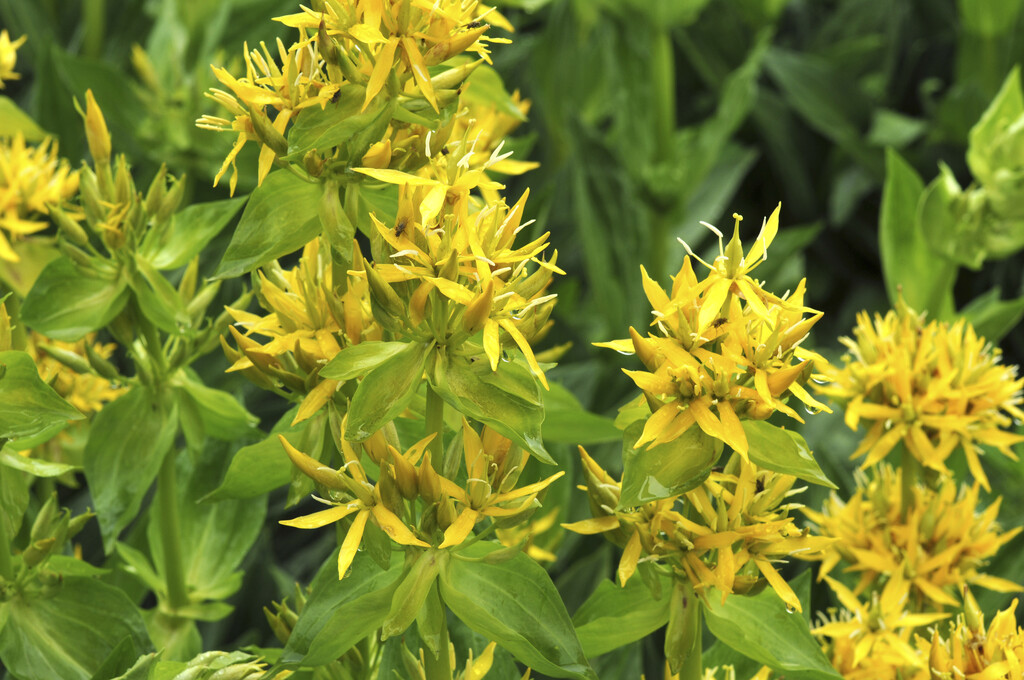Gentiana lutea
great yellow gentian
A clump-forming perennial with a basal rosette of large, ovate green leaves with deeply impressed veins. In mid to late summer, a tall flowering stem with clasping leaves produces whorls of bright yellow flowers
Size
Ultimate height
1–1.5 metresTime to ultimate height
2–5 yearsUltimate spread
0.5–1 metresGrowing conditions
Moisture
Moist but well–drainedpH
Acid, Alkaline, NeutralColour & scent
| Stem | Flower | Foliage | Fruit | |
| Spring | Green | |||
|---|---|---|---|---|
| Summer | Yellow | Green | ||
| Autumn | Green | |||
| Winter |
Position
- Full sun
- Partial shade
Aspect
East–facing or South–facing or West–facing
Exposure
Exposed or Sheltered Hardiness
H5Botanical details
- Family
- Gentianaceae
- Native to GB / Ireland
- No
- Foliage
- Deciduous
- Habit
- Clump forming
- Genus
Gentiana can be annuals, biennials, herbaceous or evergreen perennials, mostly with showy, trumpet or salver-shaped flowers
- Name status
Correct
- Plant range
- Europe
How to grow
Cultivation
Grow in reliably moist but well-drained, humus-rich soil in sun or part shade. Thrives in locations with cool, damp summers. Will not tolerate drought or waterlogging
Propagation
Propagate by division in spring
Suggested planting locations and garden types
- Cottage and informal garden
- Prairie planting
- Wildflower meadow
- Flower borders and beds
Pruning
No pruning required
Pests
Diseases
Generally disease-free
Get involved
The Royal Horticultural Society is the UK’s leading gardening charity. We aim to enrich everyone’s life through plants, and make the UK a greener and more beautiful place.
